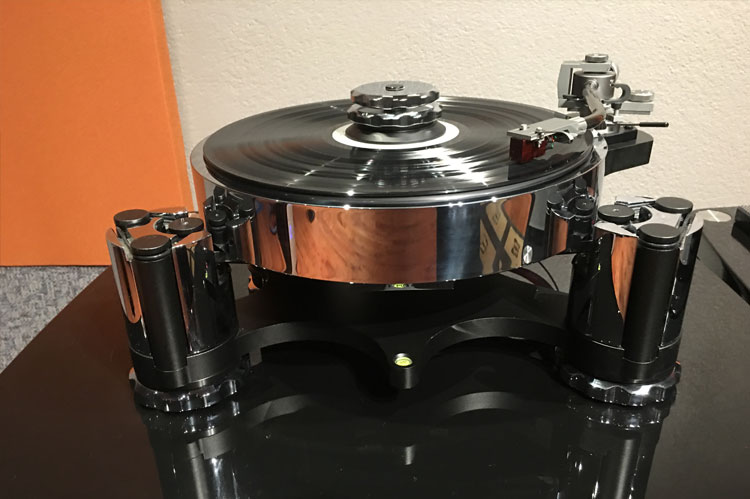
So you have done your thorough research and ready to click the "buy" button on your computer and anxiously wait for your awesome sounding "factory set up" turntable to arrive at your front door. Not so fast because that dream turntable arriving at your front door may not sound any better than your nice digital source that you are currently using.
Why you may ask? Turntables are very delicate instruments that must be set up at your home by your local audio dealer for optimal performance and reliability. Most turntables that claim that they are "factory set up" have two major flaws. First, the factory cannot afford for a technician to spend up to hours that it may take to properly set up and calibrate a turntable. Second, even if they did rough shipping handling will snap settings out of place. Therefore, "factory set up" means that the set up is at best average and add in the rough handling during shipping you end up with a turntable that is not properly set up and calibrated.
Why is set up and calibration important for a turntable? Imagine a tip of a need as thin as a human hair moving inside microscopic grooves of a record with relatively extreme speed and force. The needle sends vibrations from record grooves to its copper coils and magnets to be amplified outputting sometimes a miniscule 0.25 millivolts. Therefore, small set up adjustments to a turntable, tonearm, cartridge will cause big changes on how it sounds.
What are specific set up and calibration that a local dealer must do to make a turntable outperform even a state-of-the-art digital source? It is important to note that all of the following changes are interrelated. That is the calibration of one parameter will cause the previous one to be off. The key for the local dealer is to make sure that all of these parameters are in balance of each other and that final determination is done by experienced listening and fine tuning of these parameters by ear.
First adjustment is Vertical Tracking Angle (VTA) or Stylus Rake Angle (SRA) of the cartridge which is generally determined by height of the tonearm in relation to the record. Second adjustment is the Vertical Track Force (VTF) which is how much pressure is put on the needle by adjusting the counter weight. The third adjustment is the geometry. The geometry is the geometrical relationship of the needle, the record spindle, and the pivot point of the tonearm. The geometry is determined by using an protractor to adjust the position of the cartridge on the headshell. The last adjustment is azimuth. The azimuth is the polar rotation of the headshell. It is important to note again that all these adjustments are interrelated and they have to be made several times before final adjustments are done by ear. As you can see this process is very tedious and takes a turntable expert to perform.
The good news is that once your turntable is properly set up it will be stable for many years of the best musical enjoyment without regular service or maintenance. Yes, a properly set up turntable will sound better than most digital sources. So think twice before you click "buy" on your computer screen and go visit your local dealer who has the expertise to set up and calibrate your dream turntable.
Contact us today to learn more! Share your experiences below in the comments area and feel free to ask any questions.